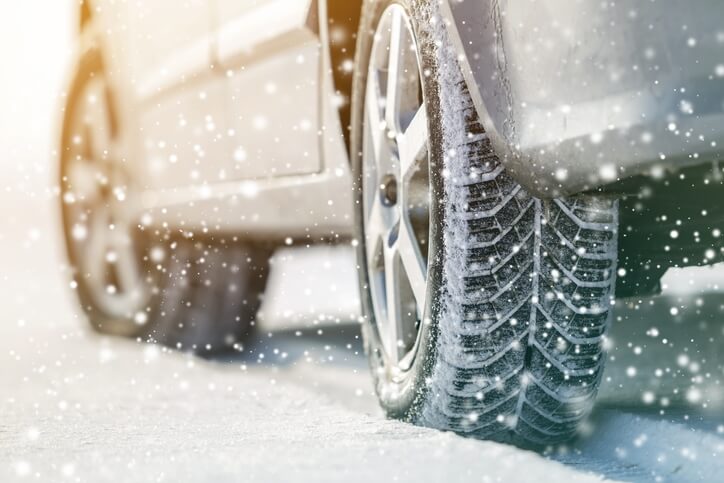Keeping your car in excellent running order this winter

January 17, 2020. Proper vehicle maintenance is especially important in a Canadian winter due to harsh and unpredictable weather conditions. Luckily, winter car breakdowns can often be avoided by implementing these simple yet effective tips.
Change to winter tires
- Driving on summer tires on snow and ice is dangerous and will make it impossible to control your vehicle. Make sure your car has all-season or winter tires.
- Winter tires outperform all-season tires by gripping the road better. They allow the car to start moving easier on snow and to stop quicker on ice.
- They are easy to identify by their mountain and snowflake symbol.
Check your oil
- Make sure you have the proper oil for winter by checking the owner’s manual.
- Because oil becomes more viscous with lower temperatures, lighter weight oil will help your car start easier and improve lubrication in the winter.
- Multi-viscosity oil, identifiable by a W in the name, such as 5W-30, 10W-30 or 5W-20, are intended for winter driving.
- Also, replace the oil filter when you get an oil change and have the heater and radiator hoses checked.
Make sure you can see
- Nobody likes scraping the car, but do not add to the danger of winter driving by having snow and mud on your windows. Scrape frost off all the windows and lift the wipers when you park the car, so they do not freeze to the windshield.
- Make sure you have enough winter windshield washer fluid.
- Windshield wipers may need to be replaced up to twice a year. If your wipers are leaving streaks on the glass, it is time for new ones.
Check your battery
- Cold temperatures are hard on your battery and not having enough of a charge can keep your car from starting
- Have your battery checked and make sure the connections do not have corrosion.
- ou will probably need a new battery at least every 5 years.
Have an emergency kit
Always have an emergency kit in your vehicle. In the winter, some items to include are:
- Jumper cables
- Warm Clothes
- Shovel
- Ice brush
- Windshield washer fluid
- Water
- Non-perishable food
- Sand
Do not drive with a near-empty gas tank
- In addition to the possibility of running out of gas due to an unexpected traffic jam, not having enough gas can cause the gas line to freeze.
- Keep the tank at least half full to prevent excessive condensation.
Replace your brake pads
- Stopping on icy roads can be difficult even with brakes that are in perfect condition.
- Check your brakes and replace the brake pads if necessary.
Check your tire pressure monthly
- Cold weather makes the air in your tires contract, resulting in lower tire pressure.
- Proper tire pressure makes your tires last longer, improves fuel efficiency, and makes your car safer to drive.
Check the radiator
- Your radiator needs to be filled to the correct level with anti-freeze, otherwise, a leak or even a transmission failure could occur.
Check the cooling system
- Using the right coolant is one of the most important things you can do for your vehicle in the winter.
- A 50/50 mix of coolant and water works in most of Canada.
- It prevents the coolant from freezing, protects the system from corrosion, and keeps the water pump lubricated.
Check the lights
- Replace the bulbs and light covers regularly to make sure the lights are bright.
- Waxing the covers can help prevent ice buildup on the lights.
Test the exhaust system
- Check the exhaust system for leaks, which can be extra dangerous in the winter when you drive with the windows closed.
Do not use cruise control
- You are more likely to lose control in a skid or if you hydroplane.



.jpg?300x300)